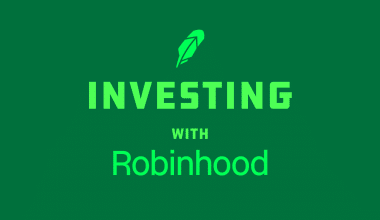Companies frequently utilize ROI to determine whether spending on marketing and expensive equipment will increase their overall income. To draw in new investors, emerging businesses may include an ROI percentage in their company presentations. In this article, we will be discussing what a good ROI is and how it can help you.
What is Good ROI
A good ROI serves as the industry standard because it represents the S&P 500’s average return, an index that measures the overall performance of the American stock market. Although the adjective “good” is arbitrary, many professionals believe that a good ROI for stock investing is 10.5% or more.
If a company or investor makes an investment in a certain sector, the niche market may have an impact on the returns on their initial investments.
Why is a Good ROI Crucial?
ROI is significant since it can assist firms and investors in understanding the advantages of their recent or upcoming investments. The stakeholder can choose whether to move through with a risky investment opportunity or look for one that will be more lucrative.
For instance, an investor can choose a more stable option with an established company if they are aware that investing in a fresh business venture would disturb their portfolio.
Who Needs ROI?
Below are some instances of organizations using ROI. A successful return on investment frequently depends on a number of variables, including the industry, rewards, and costs. Here are a few examples of sectors and investment opportunities that could benefit from an ROI % and what a suitable ROI would be for them:
#1. Investors
The ROI percentage and the time it takes to see a return on an investment are two important elements that investors frequently take into account when deciding whether to invest in a business or other investment opportunities.
When an investment has a high rate of return, it typically takes longer for investors to see their money. Returns on investments with a lower ROI percentage frequently come more quickly.
#2. Little Companies
While making decisions on whether to invest in new machinery, technology, or inventory, small firms frequently compute ROI percentages. Small enterprises may carry out market research to evaluate potential returns on investment while making these choices. They can determine this return by utilizing the company’s value as the investment’s value and the cost of the necessary equipment or technology as the investment’s cost.
#3. Marketing Specialists
Marketing experts can utilize ROI to assess if marketing initiatives or ad spending will increase a client’s income. A thorough analysis can support high marketing expenditures and demonstrate that the campaign is successful in reaching its intended audience. The marketing department could experiment with alternative advertising strategies or try to reach out to new consumers without investing extra resources if the ROI isn’t high enough.
How to Determine ROI
The formula for ROI is as follows:
#1. Establish the Investment’s Value
The amount of money made or promised to firms and investors after they invest is the value of the investment. For instance, if a business is looking for investors, it might guarantee $150 in return for every $100 invested. The investment’s worth would be $150.
In other circumstances, you might not be able to know the investment’s value until much later. For instance, the investment would be worth $500 if you invested $300 in stocks and later sold them for $500.
#2. Calculate the Investment’s Cost
The amount a corporation provides for an investment opportunity is known as the cost of the investment. Following the first step’s example, $100 would be the initial cost of the investment if a corporation guarantees a $150 return for every $100 an investor invests.
The cost of investment would take into account everything from production and marketing expenditures to research and development costs if a company was launching a new product. Use the formula. The final step is to use these two figures in the formula when you’ve determined them:
#3. ROI is Determined by Dividing the Investment Cost with the Investment Value
Bringing our examples from the first two steps to a close:
- The return on investment would be (150 – 100) / 100 = 0.5 or 50% if a business invested $100 in an opportunity and later received $150 in return.
- The return on investment would be (500 – 300) / 300 =.67 or 67% if you invested $300 in company stock and then sold it for $500.
What is a Good ROI for Rental Property
ROI, or return on investment, is the term. In plain English, it is the amount of money you get (or lose) from any investment. The return on investment (ROI) for a rental property measures how much money the property generates in comparison to the money you spend on upkeep. Going into a situation without performing an ROI estimate is never a good idea.
It’s also essential to run ROI calculations on a rolling basis if you possess a rental property to predict your profit margin. For instance, when maintenance costs increase due to inflation, this may have an immediate impact on your bottom line.
How to Determine the Return on a Rental Property
ROI is easily determined for a rental property by dividing the total by the mortgage value after deducting annual running expenses from annual rental income. But there are also other calculations you can make to figure out how much of a return you may anticipate when making an investment in a particular piece of real estate.
Calculating the Cash Flow ROI
Immediately following the payment of operational expenses, cash flow characteristics produce a consistent flow of cash each month. Calculating the cash flow ROI is quite simple:
- Cash flow = Gross rent – Costs
When renting out real estate, operating costs may include things like marketing or advertising while the property is unoccupied, property management services if you hire someone else to look after it, repairs, maintenance, property taxes, and insurance.
What is a Good ROI in Real Estate
After deducting the expenditures of the investment, which typically include the purchase price and any additional costs related to maintenance or remodeling, ROI is the profit made from a real estate purchase. ROI doesn’t become apparent until the property is sold.
Real estate appreciation, or when a piece of property increases in value over time, is one of the most popular ways to make money investing in real estate. For instance, if you spend $300,000 on a house and it improves in fair market value to $400,000 over the course of five years, that indicates a $100,000 gain in worth. Consider that you spent $20K on upgrades in addition to the $300K you paid for the house, bringing its selling price to $400K.
How is ROI Determined?
ROI is calculated as (investment cost minus sale price) / investment cost.
Sales of used goods and cash:
#1. Resale and Sales
Calculating ROI in cash sales and resale transactions is frequently not too difficult. Divide your final sale price, which is frequently referred to as your “gain,” by the investment cost amount after deducting your entire investment cost. The ROI is the conclusion of this calculation.
#2. Rentals
Having a rental property can produce consistent, enduring income. Before calculating your annual running expenses, which may include things like insurance, property taxes, HOA dues, and maintenance charges, you must first predict your projected annual rental income. The following formula can be used to determine your return on investment for a rental property: ROI is determined by dividing annual operational expenses by annual rental income (i.e., the amount that still needs to be paid on the mortgage loan).
#3. REITs
A real estate investment trust is referred to as a REIT. This passive method of real estate investment is purchasing REIT shares and collecting dividends, much like stock ownership. (In actuality, a few REITs are traded openly.)
What is a Good ROI Percentage
The return on investment (ROI) percentage that is deemed suitable for a small firm relies on a number of variables, including the sector, size, risk tolerance, and stage of development.
Generally speaking, a small business’s strong ROI percentage might range from 15% to 30%, depending on the sector and risk involved. Yet, depending on the particulars of each organization, this percentage can change dramatically.
It is critical for small business owners to evaluate their own financial goals and risks and to establish reasonable ROI goals based on their own market, industry, and business style. Other performance indicators that small business owners should take into account when assessing their financial success include gross profit margin, net profit margin, and cash flow.
But What Constitutes a Favorable Return on Investment for Your Company?
If you want to put a number on it, a good ROI may be determined by taking the difference between the investment’s current value and its cost and dividing it by the cost of the investment.
It is possible to determine a good rate of return on investments in a variety of methods and using a variety of calculations.
But ultimately, the ROI with the highest value will be the result of your computations.
What Is a Good ROI for Marketing
A 5:1 ratio is often considered the industry standard for marketing ROI, with a 10:1 ratio being deemed extraordinary. Anything below a 2:1 ratio is seen as unprofitable because businesses frequently break even with their expenditures and returns due to the high expenses of production and distribution.
Yet, businesses with costs and overhead that are less than 50% of the sales price can still turn a profit at lower ratios. As each company is unique, it’s crucial to
Take into account the specific overhead expenses, profit margins, and sector-specific industry considerations and requirements.
What Obstacles Does Assessing Marketing ROI Face?
The equations required to calculate marketing ROI may initially appear straightforward, but they may easily become intricate and deep. Think about the following:
#1. Marketing Indicators Are Too Simple
There are numerous aspects to take into account when determining the genuine marketing ROI. For marketers to gauge their success, there should first be a distinct and reliable sales baseline. In addition, outside variables like weather, seasonal trends, events, etc. that affect the success of campaigns should be taken into account when calculating ROI.
#2. Marketers are Concerned with Immediate Outcomes
To evaluate the effectiveness of their efforts, many marketers concentrate on precise, instantaneous measurements. We check click-through rates, impressions, social shares, etc. far too frequently. Nevertheless, it frequently takes months or years for marketers to fully realize the effects of efforts that are meant to support long-term initiatives like brand awareness, customer relationships, or customer retention. In light of this, it’s crucial to match success indicators with the overall objective and timeframe of a particular campaign.
#3. The Marketing Environment is Multichannel
Today’s multichannel campaigns include a variety of touchpoints across online and offline platforms rather than being restricted to a single channel. Measuring marketing ROI primarily through one or more channels will only give marketers a partial picture of the whole marketing impact. The ability to connect heterogeneous measures into coherent, granular insights is now required for precise marketing ROI measurement.
#4. A variety of Contact Points Before the Buying
Before a consumer makes a purchase choice, there are typically 6–10 touchpoints. Marketers must comprehend the influence of online and offline touchpoints throughout the marketing mix in order to accurately analyze marketing ROI at the granular level. When calculating marketing returns, the connection between various sales funnel touchpoints must also be taken into consideration.
#5. Ineffective Attribution Models
Using obsolete attribution models can result in misattribution, which can affect the accuracy of ROI calculations when marketers assess and attribute the impact of touchpoints and channels. The precise information that marketers require will not be provided by using aggregate measurements like media mix models. On the other hand, specific metrics like multi-touch attribution models won’t show how offline channels and outside variables affect marketing ROI.
Advice on Increasing Marketing ROI
The next step is to start applying the lessons learned to future marketing efforts in order to maximize future performance now that you are aware of the notion of marketing ROI and what a good ROI in marketing is. Here are some pointers for raising ROI for long-term marketing success:
#1. Set Specific Objectives
Return-On-Marketing-Objective is referred to as “ROMO” in the book What Sticks: Why Most Advertising Fails and How to Ensure Yours Succeeds by Rex Briggs. This word, which can be used instead of “marketing return on investment” (ROMI), highlights the idea that a campaign can achieve more than merely ROI, such as altering perceptions of a brand.
In light of this, it’s imperative for marketers to set precise targets that specify what external aspects constitute their ROMOs and how these particular factors can be measured (and subsequently applied to marketing ROI calculation). Use metrics like brand awareness strategy surveys, social platform interactions, or the proportion of MQLs to SQLs.
#2. Calculate Costs
To properly construct their marketing ROI assessment techniques and choose which indicators to include in their ROI calculations, marketers can benefit from establishing marketing costs such as creative development, staff, agency fees, overhead, and others.
#3. Make use of a Platform for Marketing Analytics
Tracking customers across the omnichannel landscape is made much easier by using the appropriate attribution models and marketing measurement tactics, which produce findings that are more comprehensive and detailed. Put your attention on a marketing technology platform that can combine various attributions with both online and offline metrics. With an analytics solution like the Marketing Evolution Platform at their disposal, marketers will be able to leverage better insights in their calculations, resulting in more precise and effective ROI evaluation.
Is a 50% ROI Good?
An ROI of 50% is regarded as good, but there are additional things to take into account when determining whether your investment was successful.
Is an 80% ROI Good?
An ROI of 80% sounds excellent for a five-year investment but less impressive for a 35-year investment, therefore there is a risk when using this metric to evaluate long-term investment returns.
Is a 20% ROI Good?
No,
According to economic theory, this is known as “consistently outperforming the market,” therefore it is not conceivable.
Is a 15% ROI Good?
Obtaining a consistent 15% return on investment is difficult and might not be possible with conventional investment strategies. The stock market has historically seen ups and downs, returning an average of about 10% annually.
You would probably need to invest in higher-risk assets like high-yield stocks, venture capital, or alternative investments if you wanted to consistently earn 15% on your investments. Remember that large returns carry higher risk, and there is no assurance that you will receive the desired return.
Is a 10% ROI Good?
For long-term stock market investments, the majority of investors would consider an average annual rate of return of 10% or above to be a decent ROI. Just remember that this is an average. There will be years with reduced returns, or even negative returns.
Conclusion
Naturally, figuring out ROI isn’t always as straightforward as figuring out your basic profit minus your costs. Sometimes the investment worth is higher than a straightforward profit and is not immediately apparent.
Related Articles
- WHAT IS ROI: Meaning, How to Calculate It, and Guide for A Business
- BEST AUTOMATION MARKETING SOFTWARE: Features and Pricing
- The Best 15 Return On Investment in 2023 (Updated)
- MARKETING KPIS: Effective Guide






